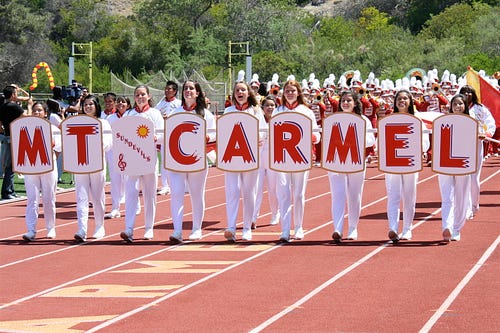 |
| Photo by Simon Noh on Upsplash |
A long time ago, I thought that the first day of school was about the rules. That ended 25 years ago when I realized that there was no greater method to make the students believe that you, the teacher, were like one of the horrifying teachers in the film Pleasantville; if you have not seen the film — for shame! You have missed a film that captures the form of magical realism so “colorfully”…but I digress.
Music, you see, is the medium that teachers and students still have in common. It may be the last link a teacher has to the ‘kid culture’ — especially if you are over 40 years old (and still think Flock of Seagulls was a band that would become legendary). I learned that a song could speak to students much like it speaks to me and, without them knowing, create a literary bond.
That’s right — I said literary. For all you stubborn snobs who believe that only Dylan and his ilk of folk singers were the last of the literary luminaries, I have news for you. When you were following that Pete Seeger group down the Hudson River, the generation before you thought you and they were commie/ hippie/ Woodstock druggies. That generation looked at you “upstart crows” and dismissed you completely. So it is time to get off your high horse and recognize music is literature, even if “it’s still rock and roll to me.”
Here are 5 songs you want the students to hear: |
| Photo by Mohammad Metri on Unsplash |
First. Rise Against is a band and their anthem is a song entitled “Swing Life Away.” I would play it on Opening Day. Why? Because its message is that we all have scars, we all have fears, (even the teacher), and if we could just take a step closer to each other and reach across the aisle, we would discover that we have so much in common. It is a heart and soul melody that show the students that you care.[all grades/ all classes]
Second. Tracy Chapman’s “Fast Car” is the finest example of the vicious circle of poverty in America. It does not matter the color of one’s skin: poverty is poverty. Chapman’s song is focused on black circumstances, particularly a woman’s plight as her hopes to escape poverty vanish much like the symbolic and illusionary “Fast Car” that lured her long ago. Since America is recognizing “The 1619 Project,” the 400 years of slavery beginning with the Dutch slave trade of that year, this song speaks to the inherent injustice that is at the root of this nation’s Original Sin. { high school, English or Social Studies}
 |
| Photo by Paulette Wooten on Unsplash |
Third. The Beatles’ “Yesterday”is a compliment to Romeo and Juliet in that it is ‘Romeo’s Lament’ to his lost love, Juliet. Just listen to the words and you can hear how Shakespeare’s “star crossed lovers” surrender to a fate that they cannot escape, one that they do not deserve — one that continues today as lovers are torn apart by wars and drug lords that are interchangeable with the families of Verona. {high school preferably}
Fourth: Bruce Springsteen’s “41 Shots- American Skin” is a must when teaching the fate of Tom Robinson in To Kill a Mockingbird. Springsteen, inspired by the police shooting death of Amadou Diallo, warns his audience that “you can get shot just for living in your American skin.” For students living far from the inner city, or naïve to the power racism and fear instills in all of us (even if we are afraid to admit it), it is an eye opener. After all, Harper Lee’s theme is that you “can’t understand a person until you walk in his shoes”…even when his shoes are stained with blood. { high school — try the video of the live performance; it is particularly chilling}
Five: In 1989, Bruce Hornsby warned folks of the upcoming disaster that is Global Warming in his song “Look Out Any Window.” Hornsby looks to the sky, the sea, and the landscape and sees just how much damage is being done. That same year Lester Brown and the World Watch Institute published The State of the World and warned of the calamity approaching faster than even Al Gore predicted in A Inconvenient Truth. As I type these words, the Brazilian rainforests are burning due to deforestation that is rooted in a mentality that deems profitability over sensibility. {All science teachers middle –high school should be on to this; I taught this in English as part of non-fiction literature}
There you have it. I know I have not included music from the last five years, but I could. As a matter of fact, that is probably my next essay. But for now, just remember this:
You cannot teach kids if you cannot reach them first.




